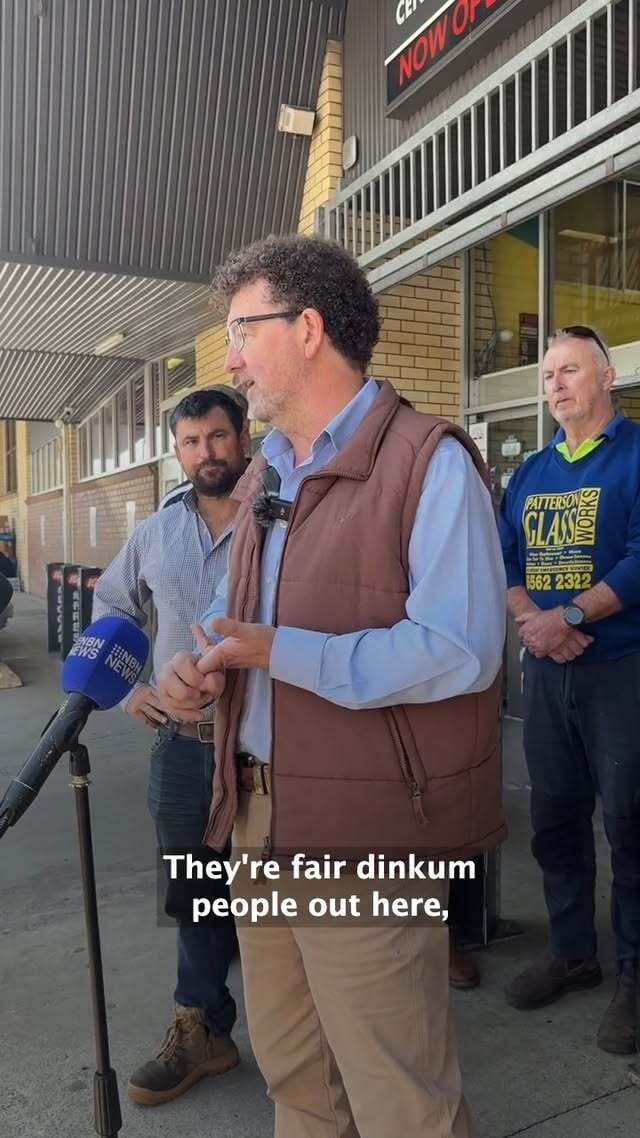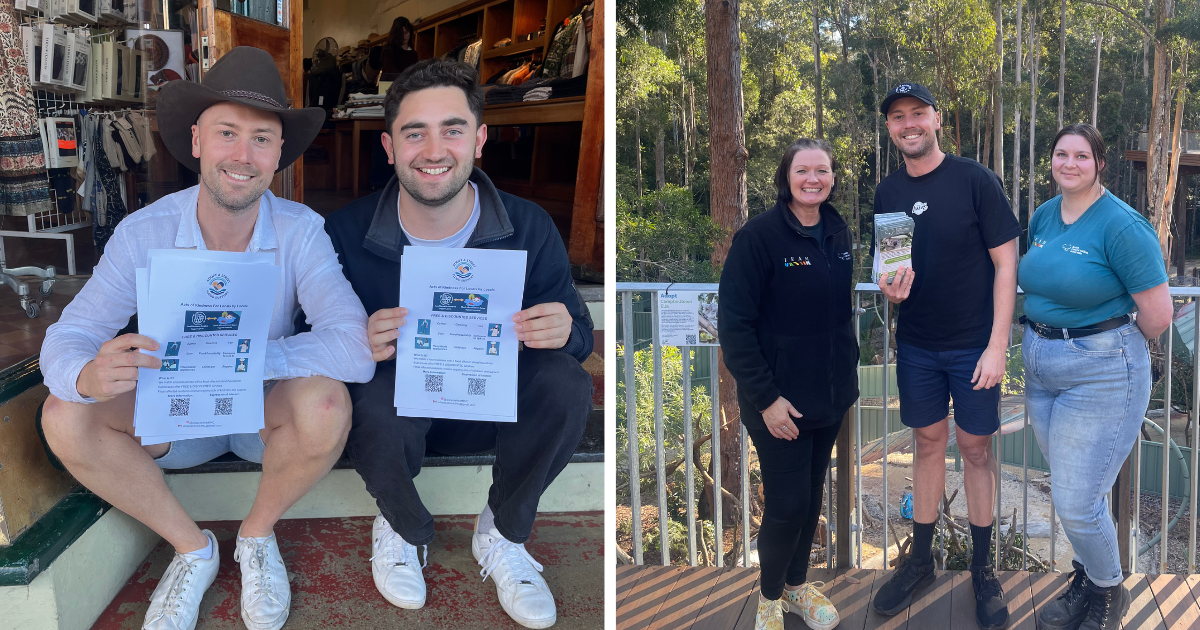We asked the Minister for Recovery: What's going on with support for small businesses after the flood?
In an interview with the Mid North Coaster, Minister for Recovery Janelle Saffin said arguing for more money with the Treasury means leading with the head, not the heart.
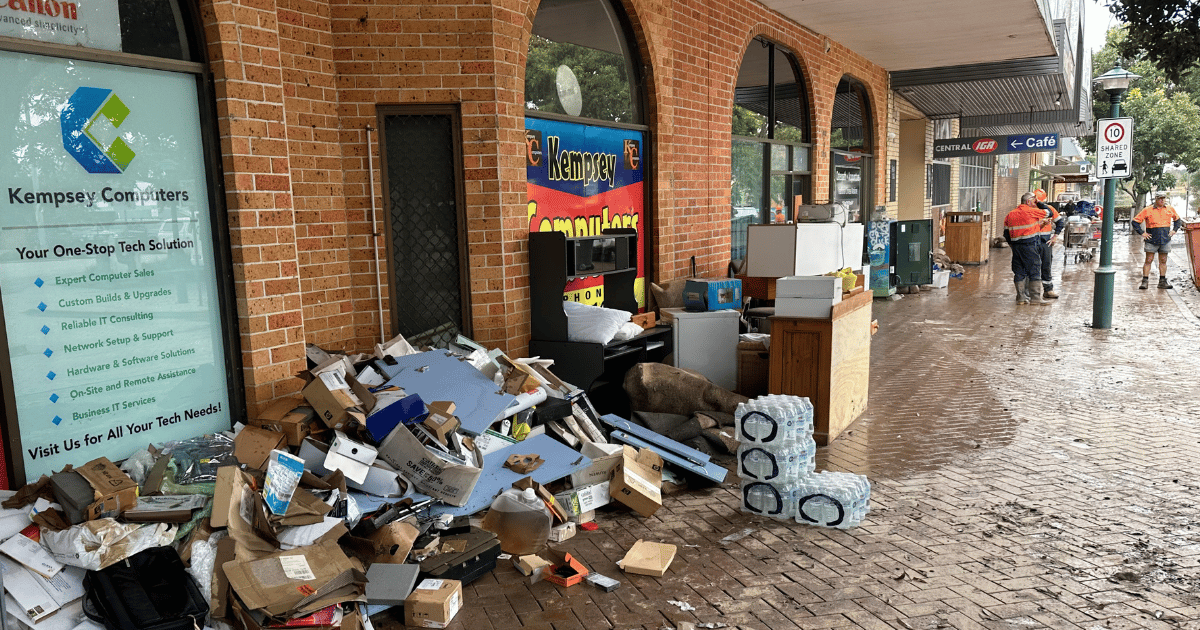
Minister for Recovery Janelle Saffin visited the Mid North Coast this week as locals and small businesses continue to reckon with the impact of devastating floods that hit the region in May.
The severe weather event isolated thousands of residents and made hundreds of homes unliveable.
For farmers, the fast-moving floodwater toppled fences, washed away hay bails, killed livestock and covered hectares of farmland leaving behind a thick layer of mud. Millions of oysters were also wiped out.
Entire CBDs were swallowed up, with floodwater inundating business across the region.
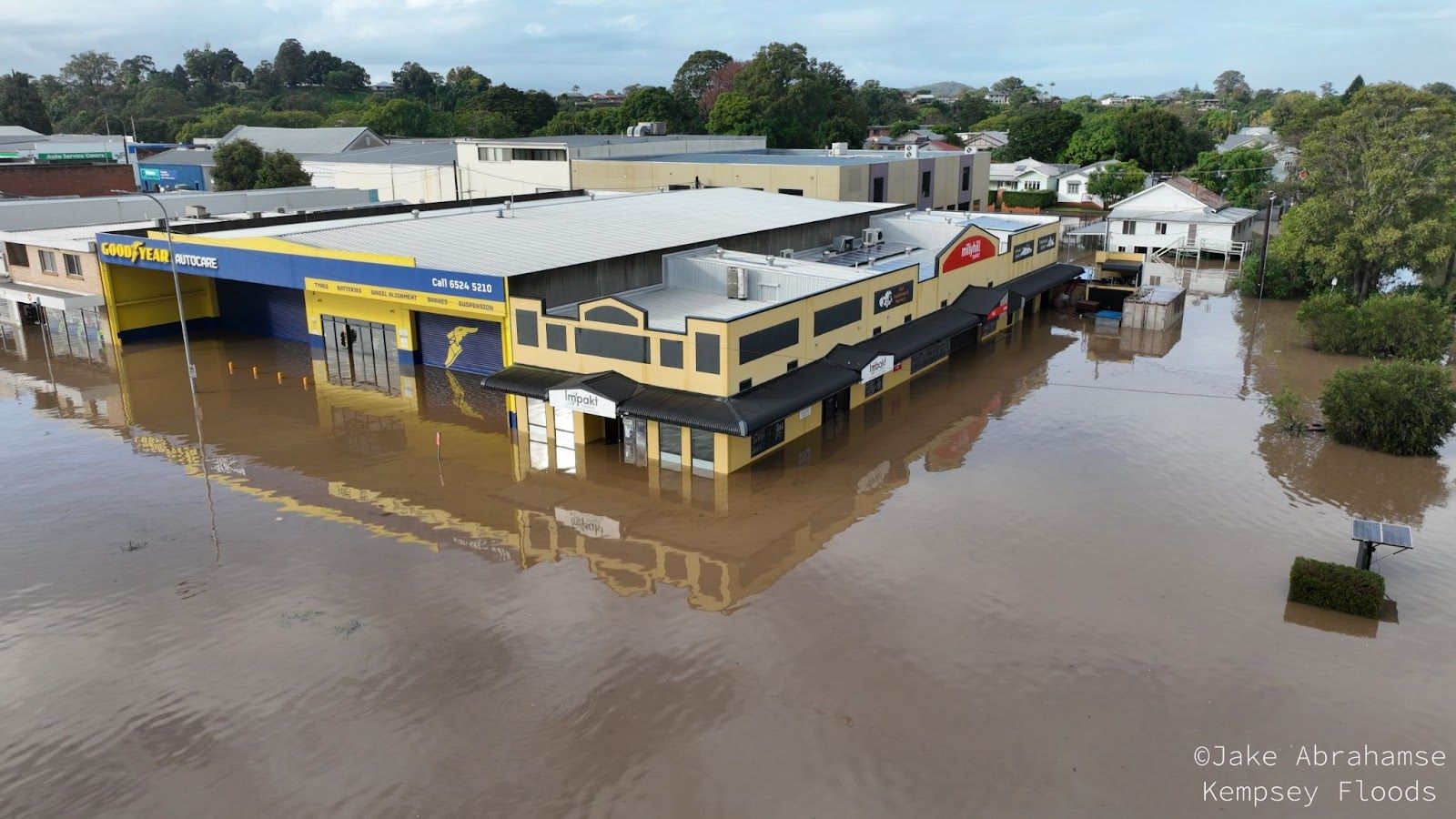
Kempsey businesses inundated by the flood in May 2025. Picture: Jake Abrahamse (with permission)
After the worst of it, an insurance catastrophe was declared with about 5000 claims made in May. However, many weren’t insured – and see cover as simply not an option due to rising prices.
The federal government has provided financial assistance. Earlier this month, Category D funding was announced for primary producers, allowing them to apply for grants up to $75,000. Small businesses were not included.
Prominent National Party figures in the region, like Member for Oxley Michael Kemp and Member for Myall Lakes Tanya Thompson, have said the federal Government is leaving flood-affected businesses behind, stating the $25,000 grants available is not enough.
But Recovery Minister Saffin, a Lismore local well-aware of the devastation of flooding events such as this, said things aren’t that simple.
“I get it, I understand the trauma,” she said, while asserting it is simply not possible for the government to cover the entire cost of the damage.
How is the government assessing the damage?
Minister Saffin met with Michael Kemp and Tanya Thompson in Kempsey and Taree on Thursday, along with small business representatives.
Saffin told the Mid North Coaster information is being gathered in a variety of ways to form an assessment of the damage and recovery ahead, and that recent roundtables were “an opportunity for the business people to put their wants and needs forward.”
“It's my job to listen to that,” she said. “It's my job to work through that, and then it's my job to put that before my colleagues, which I do.”
I understand that people want the government to put them back exactly where they were, and that's not possible. And the grants are not compensation. They can't cover every bit of damage. They're a leg up,” Saffin said.
The importance of applying for grants
Regardless of whether impacted small businesses believe the available grants are enough, they should apply for what is on offer, according to both Minister Saffin and Recovery Coordinator Dave Owens.
Minister Saffin and Owens have received feedback that some small business owners are holding off from applying, waiting for the grant to increase. Both had a simple response: apply now, because doing so shows which businesses are impacted.
“It helps us to paint a much better picture moving forward, and it helps others within the community,” Owen said.
Minister Saffin said “clear information and data” is “really helpful” when putting a case forward for financial assistance.
“When I go and argue for money with the Treasury, I have to go with my head, not my heart.”

Kempsey’s roundtable. Picture supplied by Minister Saffins’ office.
Owens said the applications provide data around the number of impacted businesses and volume of damage while acting as a “truth teller”.
“We need to substantiate to make the claim to the Commonwealth that the volume is over and above what would normally be expected. And we know that it was in this instance, but a lot of people hold back with the small businesses,” Owens said.
“Hopefully, they're registering now... to allow us to get that data.”
Impact assessments performed by the SES and data from Disaster Relief Australia are currently being collected and used to “substantiate a case” to the Commonwealth.
An online petition is also available on the Parliament of New South Wales website for those impacted by the recent flood to provide further information to the government.
How does the $25,000 grant work?
Small businesses currently have a $25,000 grant available to them.
“That's broken up into a $5,000 – what they call a load dock grant – which means you have to produce minimal documentation,” Owen explained.
“There is then the subsequent $20,000 that they can apply for, and that's on the production of invoices for money already spent.”
Rod Mole, owner of RM’s Diesel and Tractor Service, is just one Kempsey business owner who says he doesn’t have $20,000 to pay up front.
“I didn’t work for six weeks so did I have the money to spend? No.”
“It’s been a really tough six months,” he said.
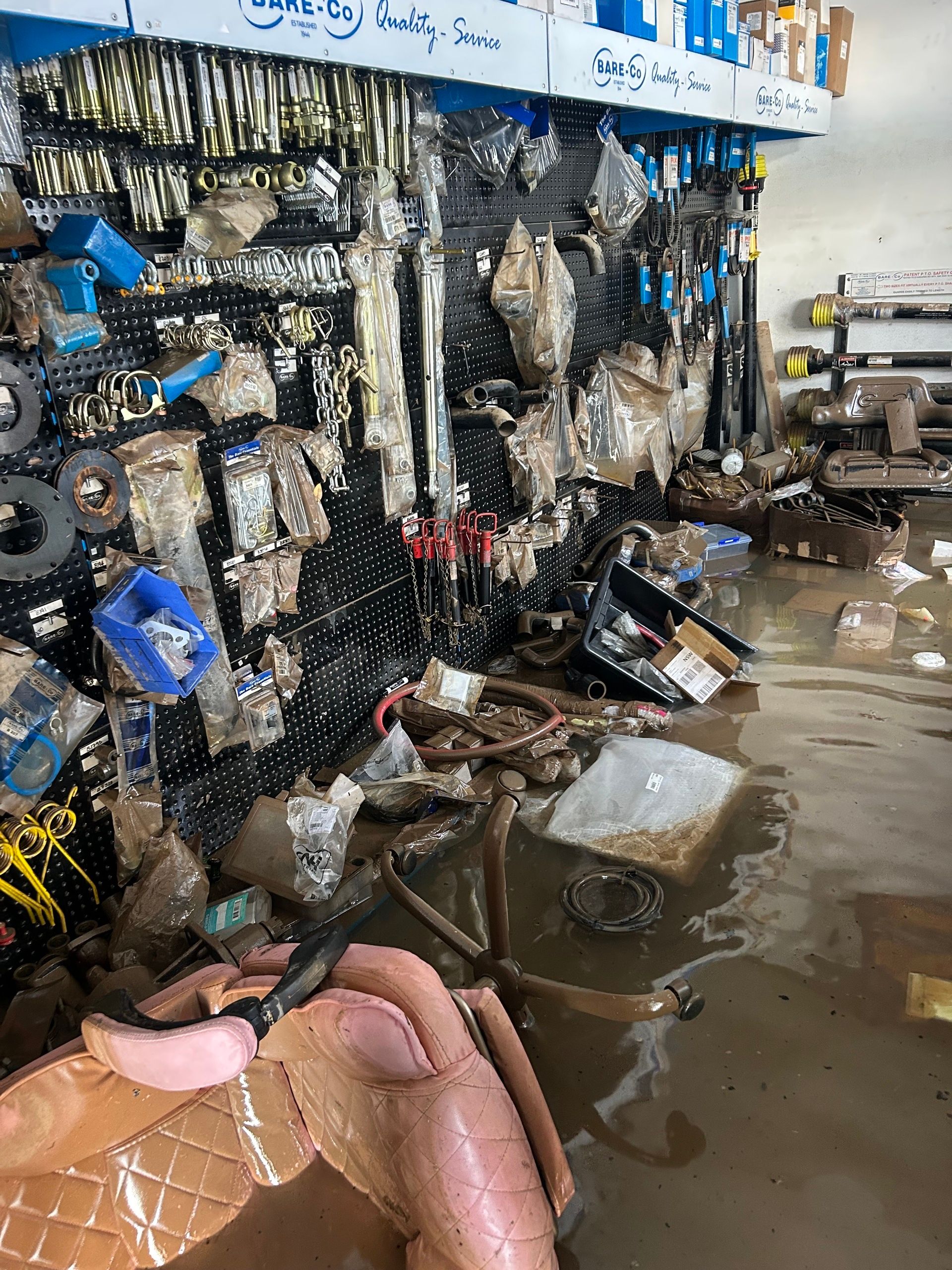
Inside RM’s Diesel and Tractor Service after the flood. Picture supplied by owner Rod Mole.
Owens clarified the invoices don’t have to be submitted all at once to be eligible for the entire $20,000.
“You can keep going back in as you purchase a stock and make another claim against it up to the maximum value of $20,000.”
If an invoice is above the maximum value, it can still be submitted and the eligible business owner will receive $20,000 as reimbursement, regardless of whether the total amount is above the threshold.
“Should an additional grant be enacted by the government, then they're automatically registered as their name is in the system, the small business, and they will be contacted to make sure that they don't have to register twice,” Owens said,
Minister Saffin said this type of grant has been around “for years” under both the Labor and Coalition governments.
“They're not new grants. They've been around for a while and the criteria is, you get some money up front and then you have to still provide the receipts later,” Saffin said.
“Some businesses can manage that. Others say they'd rather it be just an upfront grant so they don't have to do that…It's an ongoing issue.”
“Indirectly-affected” businesses not eligible
Businesses that were not directly affected by floodwater inundating the property can not receive the grant. For example, if a business owner was simply cut-off by floodwater and unable to open shop, they are not eligible.
“That's caused a number of issues with small business, but there's got to be a line drawn,” Owen said.
“It’s public money, so we're trying to be as rigid as we can, but flexible at the same time. I know that sounds a bit silly, but there's got to be processes in place.”
What has been done in terms of support?
Some impacted small business owners and National Party representatives have spoken out to say the government isn’t doing enough to support the flood recovery.
But Minister Saffin said no government would be able to perfectly put everything back to how it had been.
“When you've been hit by a disaster, there's a lot of shell shock and there's very direct financial impacts. People know that, you know, I don't need to tell them that, but I'm saying it,” she said.
“And any government cannot put everybody back exactly where they were and cannot fund everything to cover every impact. But, as the minister, I am really mindful to do what I can to help.
“Whatever is being made available now, work with that, and if more comes, that's great”
Minister Saffin said the grants available also included a housing package, clean up in the rivers and on the land, and the rebuilding of public assets.
“The roads are being rebuilt and funded, and there's personal hardship payments,” she said. “There's a lot being done.”
According to Owens, 200 people attended a small business webinar to step through the process of grant applications last week.
Service NSW also sent information to 200,000 registered businesses within the 19-affected LGAs across the Mid North Coast and Hunter regions to provide details of the step-by-step process.
“They've cleaned up and…mentally, they're still struggling. They've still got to do their orders and they're still helping their neighbours. So we've just got to try and make this process simpler for them,” Owen said.
Both Owens and Saffin acknowledged local council efforts in supporting and advocating for their communities on the “front-line”.
Thumbnail: Kempsey CBD after the flood in May. Picture supplied by Carlos Peters.

